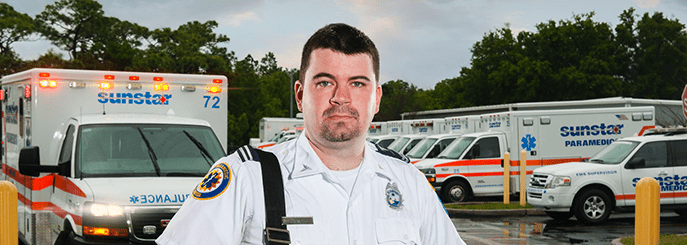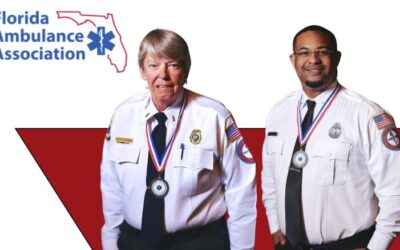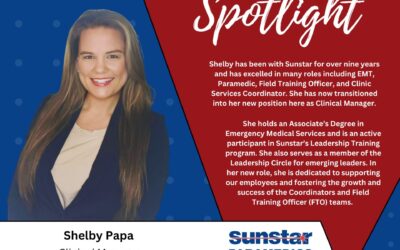At Sunstar, the training never stops. “We have a very robust education system,” explains paramedic Ian Black. Members of the Sunstar team undergo hours of continuing education every month, rigorous certification programs such as Advanced Cardiac Life Support and Advanced International Trauma Life Support, and even training on the specialized ambulances that they use.
That constant training and quality control, says Black, means that “In Pinellas county, if you call 911, you’re going to get some of the top EMS professionals in the country, in North America” – and even in the world.
A Tampa native, Black is one of Sunstar’s 31 Field Training Officers (FTOs). FTOs play a crucial role in the education and development of new Sunstar employees. Whether a new employee is fresh out of school or has years of experience, FTOs help each develop the field skills and experience they need to become fully cleared and credentialed as independent providers of emergency medical services in Pinellas County.
FTOs “take new employees under our wing – we are an extension of the education department, but in the field,” explains Black. During their training, new employees spend about 90 days riding along with the FTOs and assisting on calls. After the field training period, new EMTs and paramedics undergo a final evaluation and testing before they are finally cleared and credentialed.
When it comes to training new employees, Black says that FTOs can’t use a one size fits all approach. “Each person that we get is different. Everybody’s needs are different,” he explains. The young paramedic fresh out of school, for example, may require considerably more guidance than the experienced paramedic who has arrived at Sunstar from another agency or area of the country.
One of Black’s main challenges as an FTO is helping inexperienced trainees transition from classroom to the field. “In the field, situations aren’t always black and white like they are when you are learning in school. On their first critical calls, new guys are sometimes a little more sheepish, a little more observational,” because real-life emergency situations rarely – if ever – play out as neatly as they do in textbooks or school training scenarios. It’s this critical field observation and experience that helps develop a green trainee into a top-notch provider.
Black says that he is devoted to ensuring every paramedic he trains meets Sunstar’s high standards of excellence. To do this, he works hard to help trainees develop their interpersonal and communication skills. In the midst of an emergency, EMTs and paramedics must be able to communicate clearly and concisely with the patient, other first responders, and nurses and doctors. “I’ve found that a lot of new medics need work on that,” says Black. “They know how to start an IV, use a cardiac monitor, put in breathing tubes, but they might not know how to integrate these skills on the scene when working with a patient or other responders.” In a way, a big part of his job is teaching trainees “how to talk to strangers, because essentially what we do all day is talk to strangers” in high-pressure situations.
Trainees are ready to be independent providers when they demonstrate to the FTO that they can manage a call without the FTO having to step in. That means everything from navigating effectively to providing treatment to working in harmony with other responding units.
Getting them to that point takes hard work and dedication not only by the trainee, but by the FTO as well. A good FTO, Black says, must have “good field experience and life experience, great communication skills, a friendly personality, a strong love for EMS and a desire to actually help EMS progress by putting really good quality providers out there. And patience. Definitely patience.”



